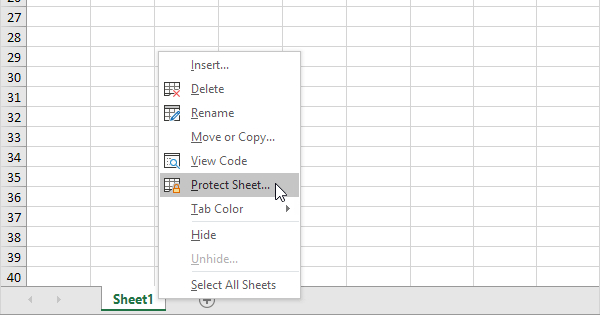Change Excel Sheet Name Easily: Step-by-Step Guide

Introduction to Excel Sheet Management

Excel is an essential tool for data manipulation, analysis, and storage, used by millions across various fields. A core functionality of Excel lies in organizing data through sheets, tabs, or worksheets. Renaming these sheets is not just a matter of organization but also crucial for maintaining workflow, readability, and data integrity. This guide aims to streamline this process with detailed steps, tips, and common troubleshooting techniques.
Understanding the Importance of Sheet Naming

Before delving into the steps, it’s important to understand why naming sheets correctly is beneficial:
- Clarity: Clearly named sheets make it easier to identify the data quickly.
- Organization: Helps in grouping related information, particularly when dealing with complex datasets.
- Accessibility: Facilitates quicker navigation within large workbooks.
- Data Integrity: Prevents confusion and potential data mishandling or loss.
How to Change Sheet Names in Excel

Using the Mouse and Keyboard

To change a sheet name using your mouse and keyboard:
- Locate the Sheet Tab: Look at the bottom of your Excel window where the sheet tabs are displayed.
- Right-Click or Double-Click: Either right-click on the sheet name you want to change or double-click to activate renaming.
- Edit the Name: Enter the new name for your sheet. Keep in mind Excel's naming rules:
- Names must be less than 31 characters.
- Cannot contain characters like '/', '?', ':', '*', '[', ']', or '\''.
- Spaces are permitted.
- Cannot use certain names like history or sheet1, sheet2, etc., which are reserved by Excel.
- Press Enter: After typing the new name, press the Enter key or click away from the tab to complete the change.
🏁 Note: If you encounter issues renaming a sheet, verify if the workbook is shared or the sheet is protected.
Using Excel Keyboard Shortcuts

To change sheet names using keyboard shortcuts:
- Activate the Sheet Tab: Use Ctrl + Page Down or Ctrl + Page Up to move between sheets. Select the tab you want to rename.
- Alt + H + O + R: This shortcut sequence will open the rename dialog for the currently selected sheet.
- Enter New Name: Type the new name and hit Enter.
Utilizing VBA for Batch Renaming

For users with numerous sheets or an automated renaming requirement, Visual Basic for Applications (VBA) can be employed:
Sub RenameSheets()
Dim ws As Worksheet
Dim newName As String
Dim i As Integer
i = 1
For Each ws In ThisWorkbook.Worksheets
newName = "Sheet_" & i
If Not IsSheetNameUnique(newName) Then
MsgBox "Sheet name '" & newName & "' already exists. Please provide unique names."
Exit Sub
End If
ws.Name = newName
i = i + 1
Next ws
End Sub
Function IsSheetNameUnique(sName As String) As Boolean
Dim ws As Worksheet
For Each ws In ThisWorkbook.Worksheets
If ws.Name = sName Then
IsSheetNameUnique = False
Exit Function
End If
Next ws
IsSheetNameUnique = True
End Function
Best Practices for Sheet Naming

While renaming sheets is straightforward, maintaining good naming practices enhances user experience and workflow:
- Keep names short and descriptive.
- Use consistent naming conventions throughout the workbook.
- Avoid using special characters that could cause issues when exporting to other file formats.
- Consider using dates or increments for version control.
Common Issues and Troubleshooting

Sometimes, renaming sheets can lead to unexpected issues:
- Sheet is Protected or Shared: You may not have permission to rename sheets in protected or shared workbooks. You will need to unprotect or disable sharing first.
- Sheet Names Colliding: Excel does not allow duplicate sheet names; ensure each name is unique.
- Character Limits and Special Characters: Stay within Excel's naming rules to avoid invalid names.
Here's a quick reference table for sheet naming rules:
| Rule | Description |
|---|---|
| Name Length | 31 characters max |
| Characters to Avoid | /, ?, :, *, [, ], \ |
| Reserved Names | history, sheet1, sheet2, etc. |

Wrapping Up

Effectively renaming sheets in Excel is more than just a cosmetic change; it's about enhancing your workbook's functionality, usability, and protecting data integrity. By following the steps outlined in this guide, you can easily adapt your sheets to reflect the data they contain or the purpose they serve. Whether you're working with a few sheets or managing a workbook with many, applying these techniques and best practices can significantly boost your productivity and clarity in handling data in Excel.
Why can’t I rename my Excel sheet?

+
Ensure the workbook is not protected or shared. If protected, you’ll need to unprotect it first. If shared, disable sharing or get permission from the workbook owner.
Can I use symbols or special characters in sheet names?

+
Yes, but with limitations. Avoid using characters like /, ?, :, *, [, ], \, as these can cause issues when exporting or linking sheets.
How can I rename multiple sheets at once?

+
Use VBA (Visual Basic for Applications). The provided VBA code in the guide allows for renaming sheets in a batch based on a pattern.
What happens if I exceed the 31 character limit for a sheet name?

+
Excel will not allow you to save the name, prompting you to shorten it to meet the 31-character limit.
Can I use dates in sheet names?

+
Yes, dates can be used in sheet names for version control or to signify when data was last updated. However, ensure the date format doesn’t exceed the character limit.